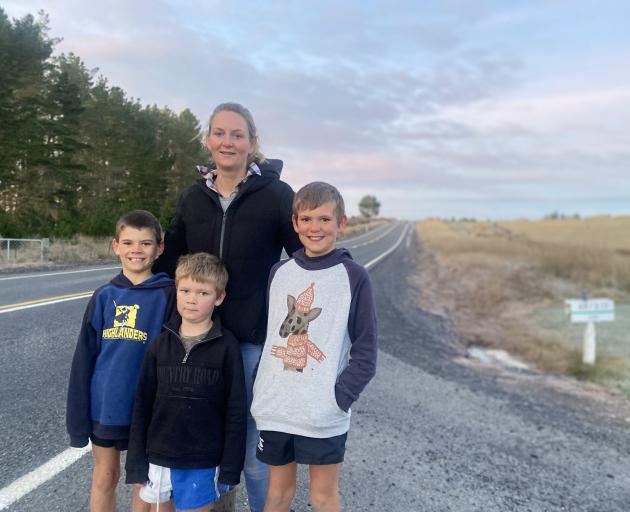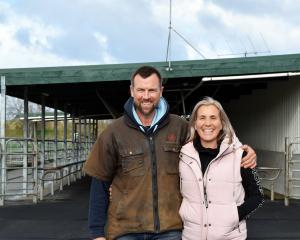
Mrs Jones and her husband Willie farm Matarae Station, located on State Highway 87 about 15 minutes south of Middlemarch. Each morning the bus picks up her three sons aged 9, 7 and 5 years outside their house, but in the afternoons the bus pulls over on the opposite side of the road and Mrs Jones must ensure she is there to meet her sons off the bus and get them safely back over the busy state highway.
It was a pleasing discovery to find the bus that pulled up at the start of the school year had seatbelts.
"This is such a treacherous state highway so we were really pleased to see the bus had seatbelts."
However, that bus lasted only three weeks on the run before being swapped for a larger bus that did not have seatbelts.
"We had to accept that change, but we didn’t like it, we are just thankful it is Nola (Tisdall) who is driving; she has been doing it a long time and she is very safety-conscious."
However, a recent spate of frost and black ice in the region prompted Mrs Jones to revisit the bus’ safety features with Go Bus.
"The road was just so icy, it was slippery just for us to cross the road for the kids to board the bus. I felt quite sick that I was putting the boys in a vehicle that had no seatbelts in such bad conditions. One of the days I just drove them to school myself."
Driver speed in the area has also been an area of concern for the family and Southern Rural Life has previously reported on the installation of signage near their bus stops to educate drivers that the speed limit is 20kmh when passing a stationary bus.
Bus driver Nola Tisdall said unfortunately the signs have shown little change in driver behaviour.
"I have my hazard lights on every time I stop. Between that and the signs you would think drivers might slow down, but they don’t; they just fly right on by."
Mrs Jones said when she raised the issue of seatbelts with Go Bus depot manager Narindervir Singh she received a reply that she needed to do more about the speed of drivers in her area.
"Which just really peeved me off. We as a small rural community have done all we can to educate drivers about the speed limit."
Mrs Jones then discovered a report published in 2010 by Bus Safety Technical Advisory Committee, a government and industry initiative led by the Ministry of Education.
The report showed significant evidence that the best way to reduce speed in drivers was the installation of active flashing signage on the front and rear of a stationary school bus.
"Ironically the school bus in the report’s images is a bus owned by Go Bus," Mrs Jones said.
"I offered to Go Bus that we would be happy to come up with the funds needed to buy these signs for our bus."
Her three emails went unanswered until Southern Rural Life stepped in.
Southern Rural Life put the questions about seatbelts and bus signage to Mr Singh.
He replied in an email statement: "Go Bus has policies and procedures in place, and we are working accordingly to those standards ... I can assure you on behalf of Go Bus Transport Ltd that Go Bus always gives priority for the safety concerns raised and tries to eliminate those in the timely manner. Hopefully we will resolve this matter as soon as possible once (we have) got approved solutions from MOE as we are contracted by MOE for these school runs, any changes made need approval from MOE."
A similar response from the MOE to Strath Taieri School regarding seatbelt buses iterated Mr Singh’s reply and added that updated research is under way in conjunction with with Te Manatū (Ministry of Transport) and Waka Kotahi (NZ Transport Authority) and recommendations would be reviewed and implemented where appropriate.
"I don’t understand why they are doing another report when they didn’t act on the last one," Mrs Jones said.
"It's so frustrating that they all just pass the buck and that there is so much inequity with some children being provided seatbelts and not others.
"I can’t see what is stopping Go Bus putting more signage on the buses to slow traffic as some buses have it already," she said.
Just before this issue went to print, Mrs Jones got a reply from Mr Singh regarding bus signage.
"So long as the signs are approved by the MOE, Go Bus is open to implementing the signs. But the community is to fundraise, install and maintain the signs.
"It has taken a lot of effort to get this tiny win and I think other parents should know they too need to be that squeaky wheel if they want to see improvements to the safety of our school buses," she said.
- Alice Scott















